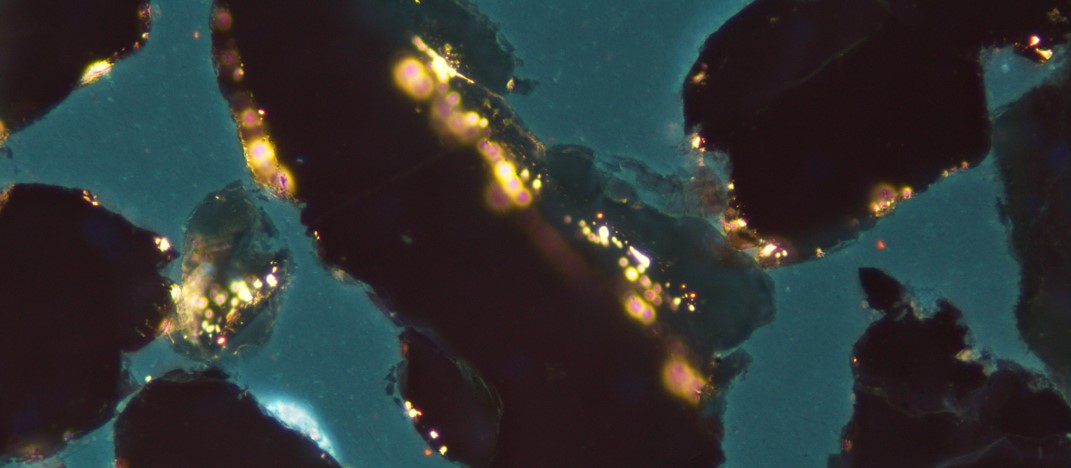In an article we recently published, Olav Walderhaug from Equinor shared his thoughts on the possible presence of a deeply buried gas source rock in the North Sea. The line of reasoning behind this comes from many observations made when studying fluid inclusions from a wide variety of reservoirs on the Norwegian Continental Shelf.
The thin section featured here, from the Middle Jurassic Tarbert Formation in the Oseberg field, forms part of the many thin sections Walderhaug studied during his career. It shows oil inclusions with a bright yellow fluorescence in quartz overgrowths.
Wet gas – Dry gas
Walderhaug found that many wet gas reservoirs contain oil inclusions. He interprets this as an indication that these fields, before turning into gas accumulations, were filled with oil. The dry gas evolved to wet gas because it picked up heavier components from the oil it displaced.
The time of formation of these fluid inclusions is an important factor in this story.
Formation of quartz overgrowths typically starts at 70 – 80°C and albitization takes place at ca. 90°C. In several of the examined wet gas reservoirs, temperatures of around 90°C were already reached in Cretaceous times. Source rocks such as the Draupne Formation were not very hot at that moment and were therefore not expected to be producing large volumes of gas.
On that basis, Walderhaug suggests that this could be an indication of the presence of a deeper pre-Jurassic source rock that expelled large volumes of dry gas. He also argues that rather than coming from discrete source rock intervals, this deeper gas source rock could well be a thick interval of mudstones with relatively low-quality dispersed organic material.
Carboniferous of the Southern North Sea
Along these lines, it is interesting to note that Bernard Besly, in a 2018 paper, argued for a revision of the view that most gas in the Southern Gas Basin is derived from Upper Carboniferous coal seams. Based on maturity trends and isotopic analyses, he states that in fact most of the gas may have been derived from Lower Carboniferous and Namurian basinal shales. This hypothesis would be in agreement with what Walderhaug states when it comes to dry gas being primarily sourced from thick successions of moderate quality source rocks. That is what the Carboniferous of the Southern North Sea mainly is.
But, for now, please enjoy the beauty of thin sections and the way these help unravel the jumps and bounds of major sedimentary basins.

